Celeriac Evaluation: 2022 Research Report
Peyton Ginakes, University of Maine Cooperative Extension Research Associate
Mark Hutton, University of Maine Cooperative Extension Vegetable Specialist
David Handley, University of Maine Cooperative Extension Small Fruit & Vegetable Specialist
A celeriac (Apium graveolens var. rapaceum) trial was conducted at Highmoor Farm in 2022. Celeriac, also sometimes called celery root, is similar to stalk celery, but is grown instead for its swollen tuberous base. Celeriac typically has a celery-like flavor but can keep longer in storage, making it a suitable winter substitution for celery. It is often cooked in soups, roasted alongside other winter vegetables, or sliced thinly to eat raw in salads. The purpose of these evaluations were to develop celeriac cultivar and plant spacing recommendations for Maine farmers.
Seedling Production
Celeriac was seeded into 128-cell trays filled with ProMix BX + Mycorrhizae media on April 13 using a vacuum seeder, and placed on 70 ˚F heating mats. Seedlings were grown in a greenhouse until planting in the field. Seedlings were thinned to one plant per cell on June 7, and fertilized with 1 Tbsp/gal of 12-45-10 Nutriculture Spoon-Feeding soluble fertilizer on June 14 (approximately 2 months after seeding).
Trial Design
Celeriac production was evaluated in a split-plot randomized complete block design with three replications, using cultivar as a main plot factor and in-row plant spacing as a subplot factor. Cultivars included Alicia, Balena, Brilliant, and Diamant and in-row spacings were 6”, 12”, and 18”. Plant spacing was included as a factor because we were not able to find clear recommendations for the Northeast region. Celeriac yield was compared based on weight and size class. We hypothesized that overall yield and celeriac size would be inversely proportionate: while greater plant densities would result in greater overall yield, individual celeriac size would decrease as a result of competition.
The field was fertilized with 50 lb/ac of 10-10-10 before black plastic mulch with one line of buried drip tape was installed on raised beds. Each plot consisted of eight plants that were transplanted by hand into double rows spaced 14” apart on June 22 (70 days after seeding), with in-row spacing varied according to treatment. Plants were watered in with 1 cup each of 12-45-10 Nutriculture Spoon-Feeding soluble fertilizer (1 Tbsp/gal) immediately after transplanting. Plots were irrigated as needed, kept free of weeds, and fertigated once on August 1 (40 days after transplanting) using the same Nutriculture soluble fertilizer.
Visual Observations
Celeriac plants grew very slowly – markedly more so than adjacent celery plants. Plants grown at 6” in-row appeared to have the greatest vigor and growth rate. However, because we replaced dead plants with new seedlings twice within nine days after transplanting, we did not measure plant vigor directly. We also observed that plant roots appeared root bound even a month after transplanting, indicating that early growth may have benefitted from earlier transplanting. Growth increased greatly at the end of the season as hypocotyls (the edible celeriac base) enlarged.
Data Collection
A minimum of three plants per plot were harvested on October 21 (121 days after transplanting). Stalks and roots were trimmed, and individual celeriac were sorted into size classes based on diameter (small: 2-3”, medium: 3-4”, large: > 4”) and weighed. Celeriac less than 2” in diameter were deemed unmarketable.
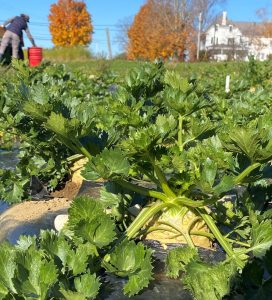
Results
Average and maximum weight of individual celeriac are shown in Table 1. Balena and Brilliant celeriac typically were larger than Alicia and Diamant. In this planting, 12” in-row spacing generally produced the largest celeriac followed by the 18” spacing and 6” spacing.
a Data shown are in lb / plant.
Interestingly, allowing plants greater space to grow did not result in larger celeriac. No differences between the proportion of small, medium, and large celeriac were found between cultivars or spacings. Celeriac size classes were combined to summarize marketable yield adjusted to 100 bed-feet (Table 2). Spacing plants at 6” in-row produced the greatest yield for all evaluated cultivars, which was expected since this spacing had two and three times the number of plants in 12” and 18” in-row plots, respectively, and the effect of plant spacing on celeriac weight was relatively small. At this high-yielding 6” in-row spacing, Balena produced greater overall marketable yield than Alicia and Diamant.
a In-row spacing values in a row followed by the same capital letters are not different (p < 0.05).
b Cultivar values in a column followed by the same lowercase letter are not different (p < 0.05).
Cultivars
Alicia celeriac grown at 18” in-row spacing:

Balena celeriac grown at 6”, 12”, and 18” in-row spacings, respectively:
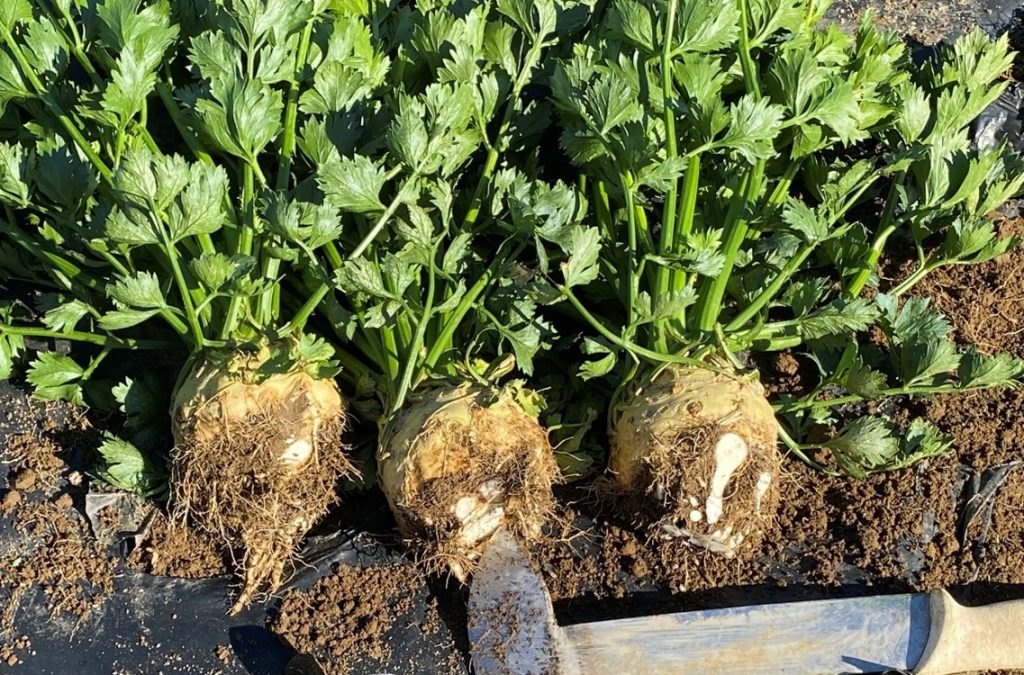
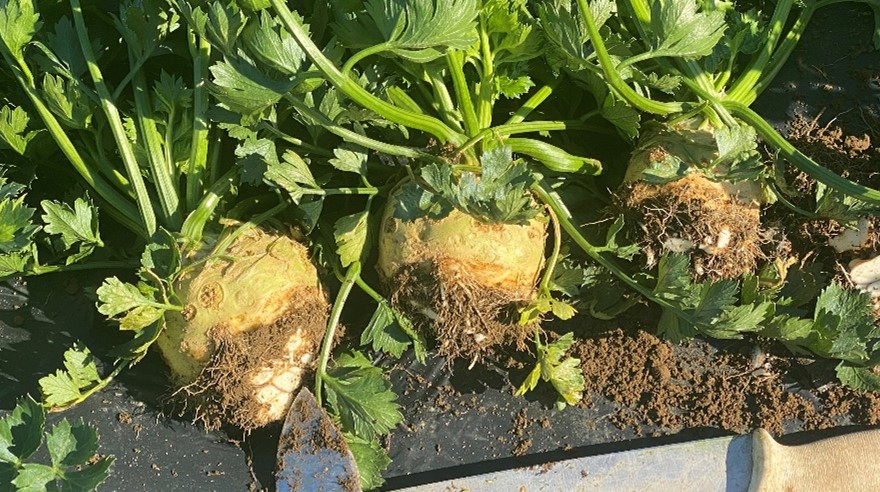

Brilliant celeriac grown at 6” and 12” in-row spacings, respectively:
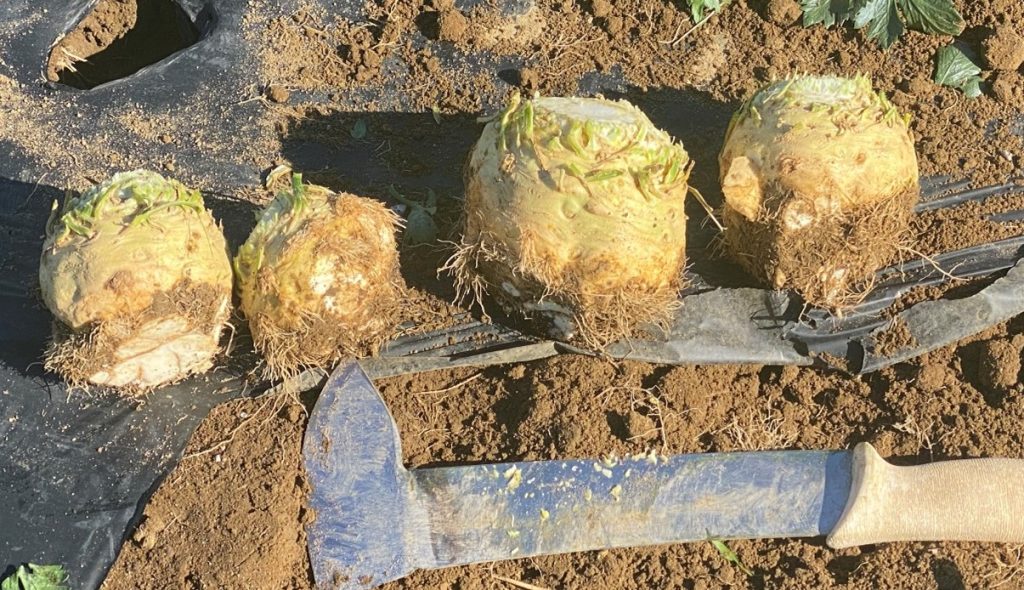
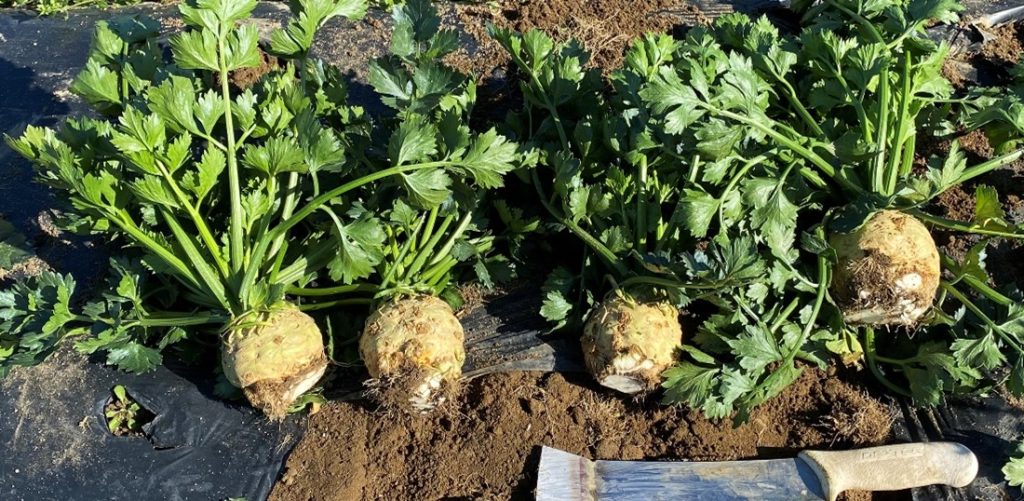
Diamant celeriac grown at 6″ and 12″ in-row spacings, respectively:
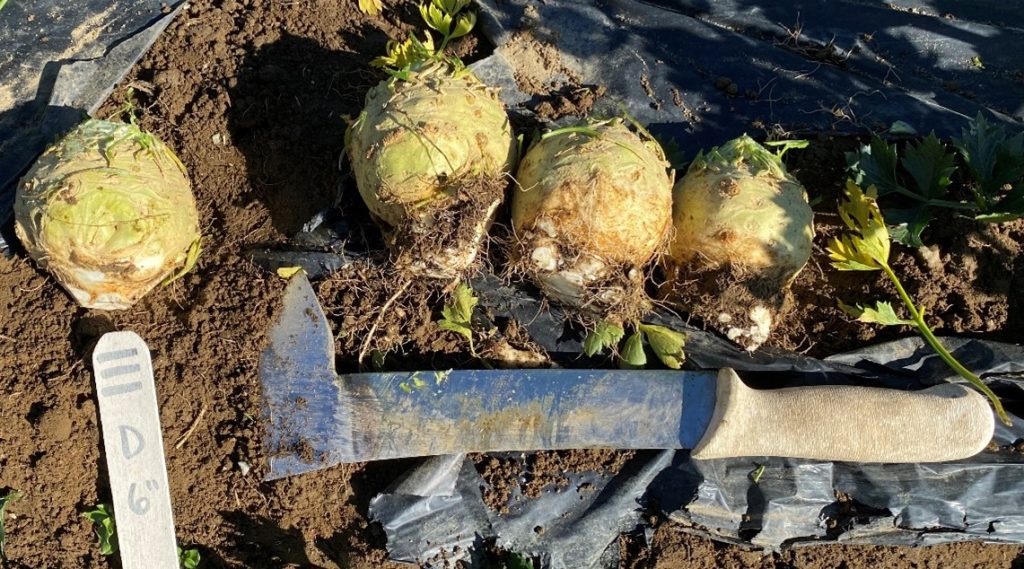
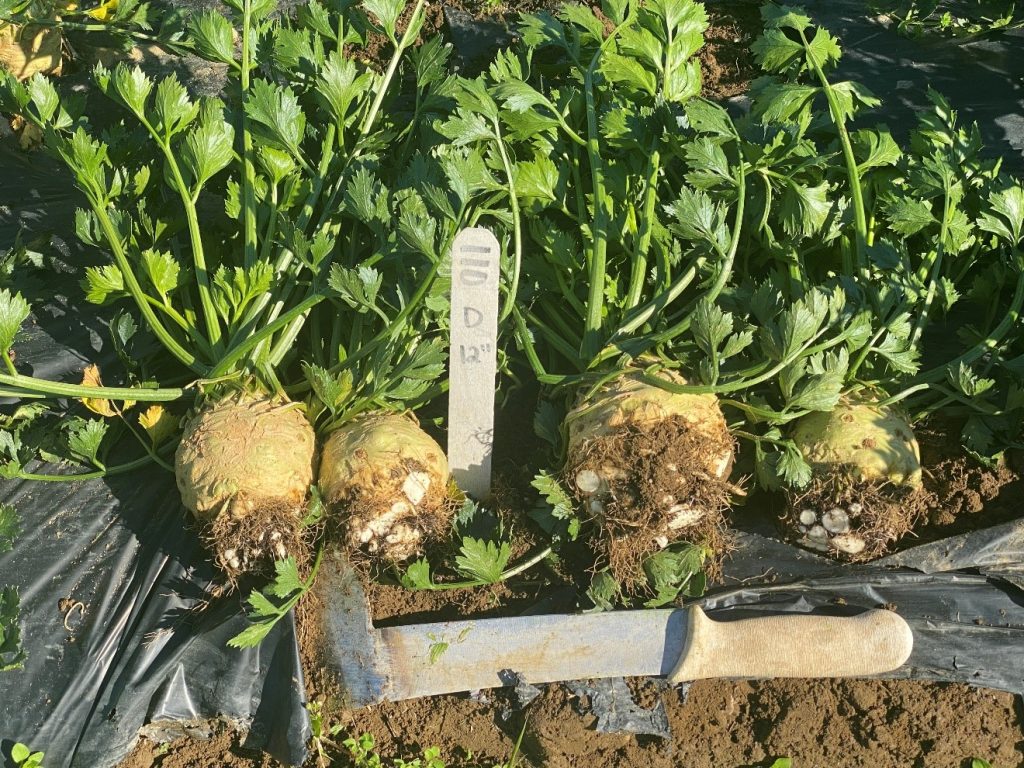
Acknowledgements
This work was supported by the University of Maine Cooperative Extension, University of Maine Agricultural and Forestry Experiment Station Hatch ME0-22320, the Maine Vegetable and Small Fruit Growers Association, and the New England Vegetable and Berry Growers Association. Bejo Seeds generously donated materials for this project. We are grateful for assistance from Greg Koller and Patricia McManus, and field assistants Jonathan Brenner, June Foyt, Ethan Handley, Lydia Handley, Lee Lavoie, Abigail Lucas, Brooke Martin, and Karla Mendoza.
For any questions or comments on this research, please contact Peyton Ginakes at peyton.ginakes@maine.edu or Mark Hutton at mark.hutton@maine.edu, or call 207.933.2100.
Download and Print:
Information on this website is provided purely for educational purposes. No responsibility is assumed for any problems associated with the use of products or services mentioned in this website. No endorsement of products or companies is intended, nor is criticism of unnamed products or companies implied.
In complying with the letter and spirit of applicable laws and pursuing its own goals of diversity, the University of Maine System does not discriminate on the grounds of race, color, religion, sex, sexual orientation, transgender status, gender, gender identity or expression, ethnicity, national origin, citizenship status, familial status, ancestry, age, disability physical or mental, genetic information, or veterans or military status in employment, education, and all other programs and activities. The University provides reasonable accommodations to qualified individuals with disabilities upon request. The following person has been designated to handle inquiries regarding non-discrimination policies: Director of Equal Opportunity, 5713 Chadbourne Hall, Room 412, University of Maine, Orono, ME 04469-5713, 207.581.1226, TTY 711 (Maine Relay System).
